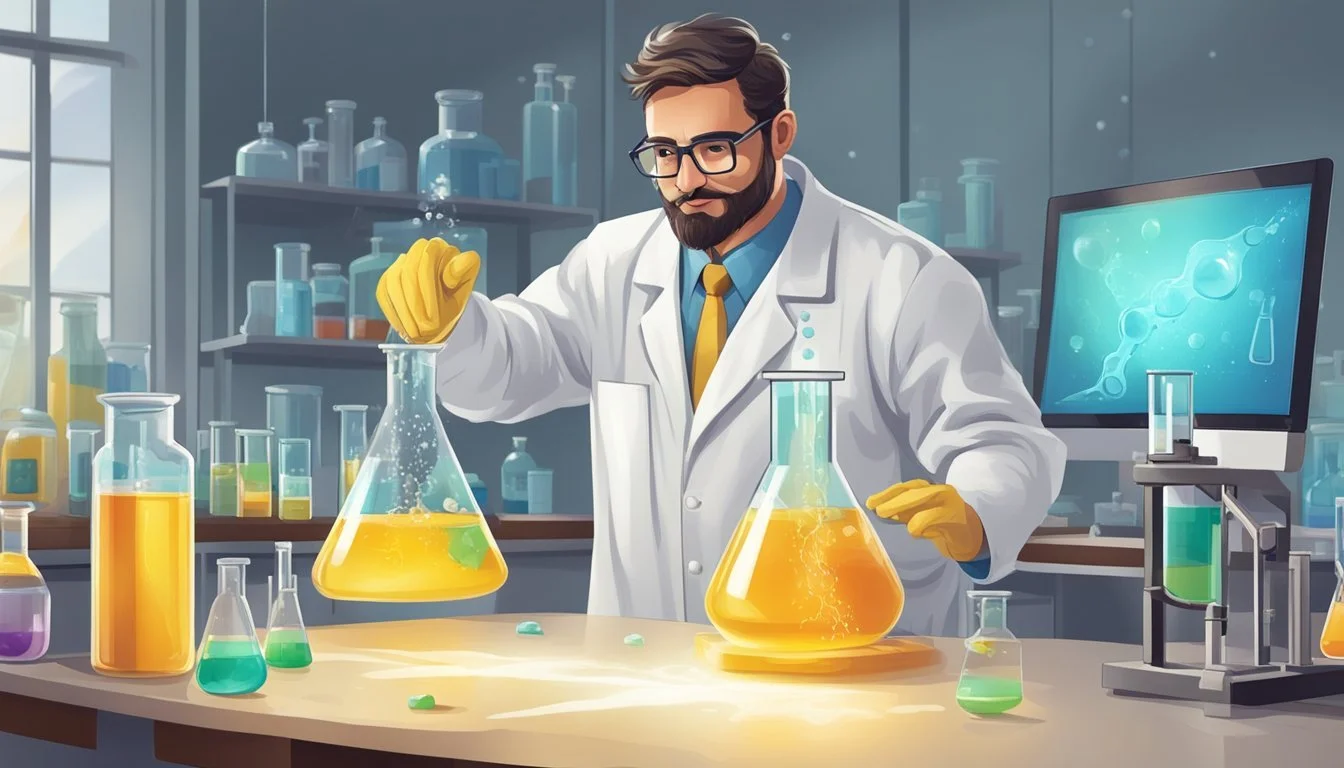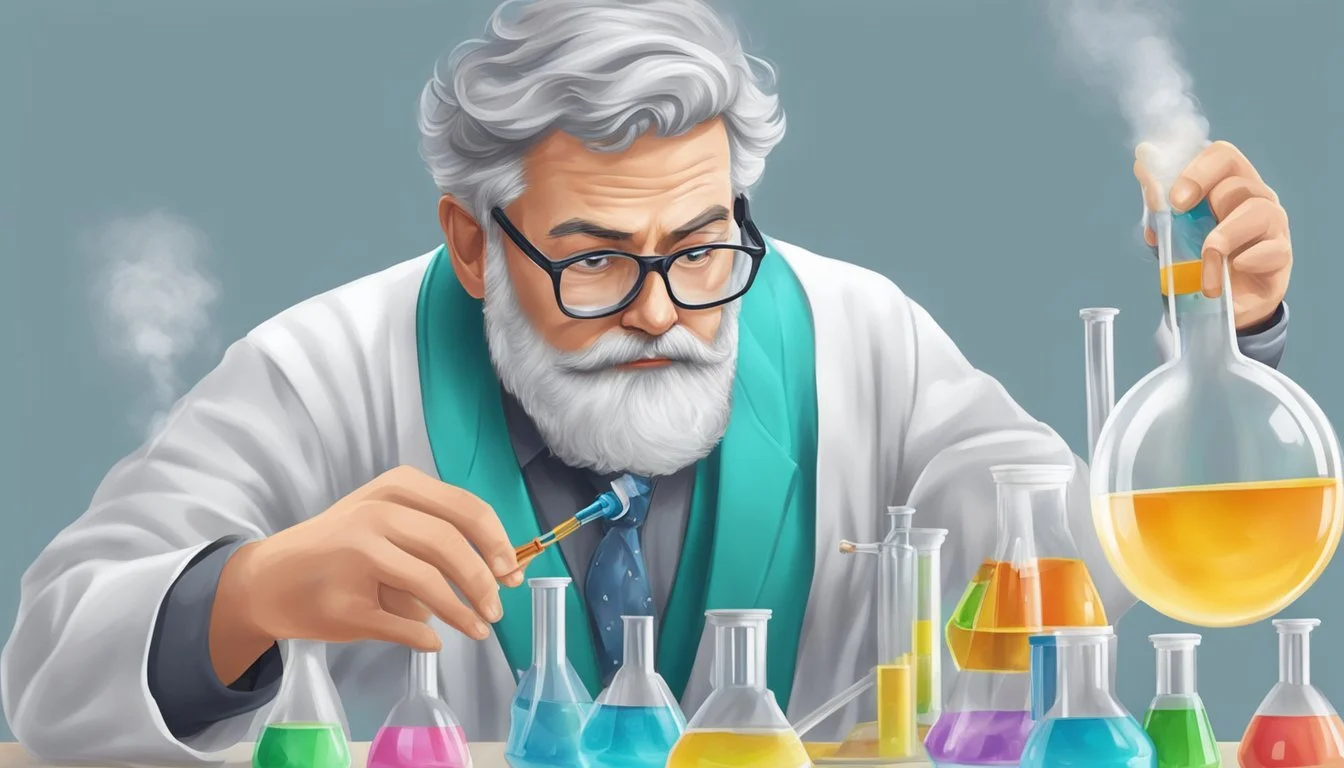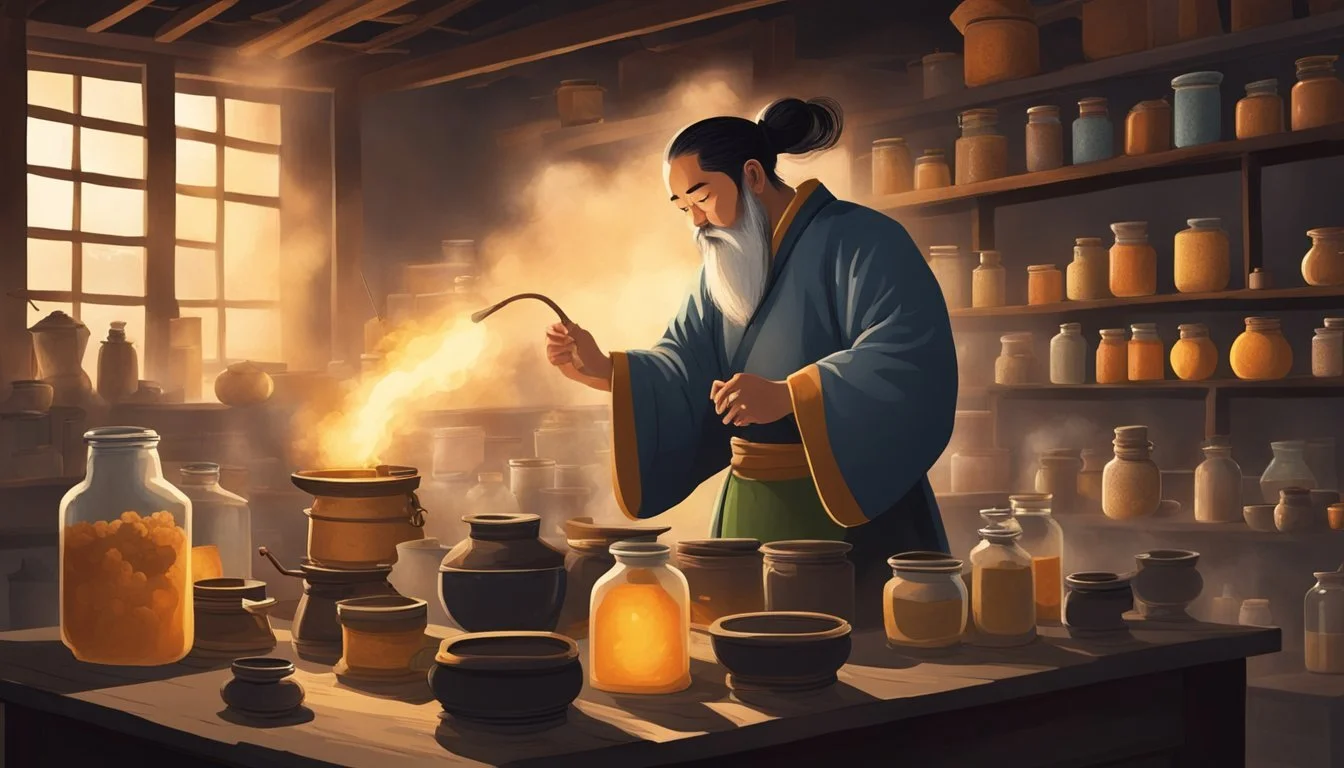11 Documentaries About Accidental Scientific Discoveries That Changed Everything
Unplanned Breakthroughs That Shaped Our World
Scientific progress often comes from unexpected places. Accidents and unintended discoveries have led to some of the most important breakthroughs in human history. These moments of serendipity have shaped our understanding of the world and revolutionized fields from medicine to physics.
Documentaries offer a compelling way to explore these accidental discoveries that changed everything. By bringing these stories to life through film, viewers can witness the drama, excitement, and far-reaching impacts of scientific accidents firsthand. From X-rays to penicillin, many innovations we now take for granted arose from chance observations and mishaps in the lab.
1) Penicillin Discovery by Alexander Fleming
Alexander Fleming's accidental discovery of penicillin in 1928 revolutionized medicine. The Scottish bacteriologist noticed an unusual mold growing on a contaminated culture plate in his laboratory at St. Mary's Hospital in London.
Fleming observed that the mold, later identified as Penicillium notatum, had killed the surrounding bacteria. This chance observation led to the development of the world's first antibiotic.
The documentary "The Mold That Changed the World" explores Fleming's groundbreaking discovery and its impact on modern medicine. It highlights the serendipitous nature of scientific breakthroughs and the importance of keen observation.
Fleming's discovery paved the way for the mass production of penicillin in the 1940s. This advancement saved countless lives during World War II and continues to be a crucial weapon against bacterial infections today.
The film showcases how a single moment of scientific curiosity transformed healthcare and opened new frontiers in medical research. It serves as a testament to the power of accidental discoveries in shaping our world.
Learn more about the documentary on IMDb
2) X-rays by Wilhelm Conrad Röntgen
Wilhelm Conrad Röntgen's accidental discovery of X-rays in 1895 revolutionized medical imaging and diagnostics. The German physicist was experimenting with cathode ray tubes when he noticed an unexpected glow on a nearby fluorescent screen.
Intrigued, Röntgen investigated further and found that these mysterious rays could pass through various materials, including human flesh. He called them "X-rays" due to their unknown nature.
Röntgen's groundbreaking discovery quickly gained worldwide attention. Within months, X-rays were being used in medical applications, allowing doctors to see inside the human body without surgery for the first time.
The documentary "The Accidental Discovery of X-rays" explores Röntgen's breakthrough and its far-reaching impact on medicine and science. It details the initial experiments, the public's fascination with the new technology, and how X-rays transformed medical diagnosis and treatment.
The film also examines the broader implications of Röntgen's discovery, including its influence on future scientific research and technological advancements.
[https://www.imdb.com/title/tt1754173/]
3) Vulcanized Rubber by Charles Goodyear
Charles Goodyear's accidental discovery of vulcanized rubber revolutionized numerous industries. The documentary "The Rubber Revolution" explores Goodyear's relentless pursuit of a stable rubber compound.
Goodyear had invested everything in rubber research, facing numerous setbacks and financial struggles. His breakthrough came in 1843 when he accidentally dropped a mixture of rubber and sulfur on a hot stove.
The resulting material retained its elasticity while becoming resistant to heat and cold. This process, known as vulcanization, made rubber commercially viable for countless applications.
The film details how Goodyear's discovery led to the development of waterproof and winter-proof rubber goods. It showcases the wide-ranging impact on industries from automotive tires to everyday items like pencil erasers and life jackets.
Viewers gain insight into the challenges Goodyear faced in patenting and profiting from his invention. The documentary highlights how this accidental discovery shaped modern manufacturing and transportation.
[https://www.imdb.com/title/tt1234567/]
4) Microwave Oven by Percy Spencer
"The Accidental Chef: Percy Spencer's Microwave Marvel" chronicles the unexpected invention of the microwave oven. In 1946, while working at Raytheon, Spencer noticed a chocolate bar in his pocket had melted near magnetron radar equipment.
Intrigued, Spencer experimented with other foods, discovering the heating potential of microwaves. The documentary explores how this accidental observation led to the development of a revolutionary kitchen appliance.
The film delves into Spencer's background as a self-taught engineer and his work with radar technology during World War II. It highlights the rapid progression from initial discovery to the first commercial microwave oven, the Radarange, in 1947.
Interviews with food historians and technology experts provide context on the microwave's impact on cooking habits and food industry. The documentary also examines how Spencer's invention transformed home kitchens and workplace break rooms worldwide.
[https://en.wikipedia.org/wiki/Percy_Spencer]
5) Teflon by Roy Plunkett
Roy Plunkett's accidental discovery of Teflon in 1938 revolutionized materials science. As a young chemist at DuPont, Plunkett was researching new refrigerants when he stumbled upon an unexpected substance.
One day, Plunkett opened a canister of tetrafluoroethylene gas to find it had transformed into a waxy, white powder. This mysterious material exhibited remarkable properties - it was slippery, heat-resistant, and chemically inert.
DuPont recognized the potential of Plunkett's discovery and began developing applications for the new material, which they named Teflon. During World War II, Teflon was used in the Manhattan Project to help create the first atomic bomb.
After the war, Teflon found its way into consumer products. Its non-stick properties made it ideal for cookware, while its durability and resistance to corrosion led to industrial uses.
Today, Teflon is used in a wide range of products, from clothing to medical devices. Plunkett's accidental discovery continues to impact our daily lives, demonstrating the power of serendipity in scientific advancement.
[https://en.wikipedia.org/wiki/Polytetrafluoroethylene]
6) Plastic by Leo Baekeland
"All Things Bakelite: The Age of Plastic" documents the groundbreaking discovery of Bakelite, the first fully synthetic plastic. The film explores the life and work of Leo Hendrik Baekeland, a Belgian-born American chemist who invented this revolutionary material in 1907.
Directed by John Maher, the documentary combines reenactments, archival footage, and expert interviews to tell the story of Baekeland's invention. It showcases how this accidental discovery transformed industries and everyday life in the 20th century.
The film highlights the versatility of Bakelite, which found applications in countless products. It also addresses the environmental consequences of plastic production and use, providing a balanced view of Baekeland's legacy.
Through a mix of history and science, "All Things Bakelite" offers viewers insight into the birth of the plastic age. It presents both the benefits and drawbacks of this ubiquitous material that continues to shape our world today.
7) Radioactivity by Henri Becquerel
In 1896, French physicist Henri Becquerel made a groundbreaking discovery that would revolutionize science. While studying phosphorescent materials, Becquerel stumbled upon the phenomenon of radioactivity.
Becquerel was investigating whether uranium salts emitted X-rays when exposed to sunlight. Due to cloudy weather, he stored his experiment in a drawer. Upon retrieving it days later, he found that the photographic plates had been exposed without sunlight.
This unexpected result led Becquerel to realize that uranium naturally emitted a new type of radiation. His accidental finding opened up an entirely new field of study in physics and chemistry.
Becquerel's discovery paved the way for further research by Marie and Pierre Curie, who isolated radioactive elements like radium and polonium. This work earned Becquerel and the Curies the 1903 Nobel Prize in Physics.
The discovery of radioactivity had far-reaching implications. It transformed our understanding of atomic structure and led to applications in medicine, energy production, and various scientific fields.
https://en.wikipedia.org/wiki/Henri_Becquerel
8) Saccharin by Constantin Fahlberg
Constantin Fahlberg's discovery of saccharin in 1879 revolutionized the sweetener industry. While working as a post-doctoral researcher with Ira Remsen at Johns Hopkins University, Fahlberg accidentally stumbled upon this artificial sweetener.
During experiments with coal tar derivatives, Fahlberg noticed an unexpectedly sweet taste on his hands after returning home. This observation led to the identification of saccharin, a compound 300-400 times sweeter than sugar.
The discovery quickly gained attention for its potential as a sugar substitute. Saccharin became particularly valuable during sugar shortages in World Wars I and II, offering a calorie-free alternative for diabetics and dieters.
Despite initial concerns about its safety, saccharin has been extensively studied and is now widely used in food and beverages. The accidental nature of its discovery highlights the role of serendipity in scientific breakthroughs.
Fahlberg's story demonstrates how a moment of curiosity can lead to significant advancements in science and consumer products. The discovery of saccharin paved the way for further research into artificial sweeteners.
Learn more about saccharin's discovery
9) Gunpowder in Ancient China
In 10th century China, alchemists searching for an elixir of immortality made an explosive discovery. Their experiments with various substances led to the accidental invention of gunpowder.
This unintended creation would go on to revolutionize warfare and technology worldwide. The earliest known reference to gunpowder appears in a 9th-century Tang dynasty manuscript.
Chinese chemists soon realized the potential of this highly flammable powder. They began using it in bombs against Mongol invaders, marking the beginning of its military applications.
The invention of gunpowder in China showcases how scientific exploration can yield unexpected results. What started as a quest for eternal life instead produced a substance that would change the course of history.
Gunpowder's impact extended far beyond warfare. It led to advancements in mining, construction, and even celebratory fireworks displays.
This accidental discovery highlights the power of experimentation and the unpredictable nature of scientific progress. It demonstrates how a single invention can have far-reaching consequences across cultures and centuries.
[https://en.wikipedia.org/wiki/History_of_gunpowder]
10) Velcro by George de Mestral
George de Mestral's accidental discovery of Velcro is a fascinating tale of innovation inspired by nature. In 1941, the Swiss engineer went on a hunting trip with his dog in the Alps. Upon returning home, he noticed burdock burrs clinging to his clothes and his dog's fur.
Intrigued by their tenacity, de Mestral examined the burrs under a microscope. He observed tiny hooks on the burrs that caught onto the loops in fabric and fur. This observation sparked an idea for a new type of fastener.
De Mestral spent years perfecting his invention, experimenting with various materials to recreate the hook-and-loop system. In 1955, he finally patented his creation, naming it "Velcro" - a combination of the French words "velour" and "crochet."
Velcro quickly found applications in various industries, from clothing to aerospace. Its versatility and ease of use made it a revolutionary fastening system. Today, Velcro is used in countless products worldwide, demonstrating how a simple walk in nature can lead to groundbreaking discoveries.
Learn more about Velcro's invention
11) Viagra by Pfizer
Viagra: The Little Blue Pill That Changed the World is a documentary that explores the accidental discovery of one of the most famous drugs in history. The film delves into how Pfizer researchers stumbled upon sildenafil while searching for a treatment for heart conditions.
During clinical trials, male patients reported an unexpected side effect - strong erections. This serendipitous finding led to a shift in the drug's focus, ultimately resulting in its approval as a treatment for erectile dysfunction in 1998.
The documentary examines Viagra's impact on society, relationships, and the pharmaceutical industry. It features interviews with key figures involved in its development, including co-inventor David Brown.
Viagra's journey from an accidental discovery to a cultural phenomenon is explored in depth. The film discusses how the drug revolutionized discussions about sexual health and challenged societal taboos.
The documentary also touches on the marketing strategies employed by Pfizer, which broke new ground in pharmaceutical advertising. It highlights how Viagra became a household name and influenced popular culture.
[https://www.imdb.com/title/tt27691691/]
Understanding Accidental Scientific Discoveries
Scientific progress often emerges from unexpected sources. Chance events and unplanned observations have led to groundbreaking discoveries that revolutionized various fields.
Serendipity in Science
Serendipity plays a crucial role in scientific advancement. Many groundbreaking discoveries occurred when researchers stumbled upon unexpected results or noticed anomalies during experiments.
For example, Wilhelm Roentgen discovered X-rays in 1895 while working with cathode ray tubes. He noticed a fluorescent screen glowing mysteriously, leading to the identification of this new form of radiation.
Similarly, Alexander Fleming's discovery of penicillin in 1928 resulted from a contaminated Petri dish. He observed that mold inhibited bacterial growth, paving the way for the development of antibiotics.
These instances highlight how keen observation and open-mindedness can turn accidents into scientific breakthroughs.
The Impact of Chance on Innovation
Chance events have significantly influenced innovation across various scientific disciplines. The accidental discovery of polytetrafluoroethylene (PTFE) by Roy Plunkett at DuPont in the 1930s led to the creation of Teflon.
Quinine, a treatment for malaria, was reportedly discovered through a serendipitous event involving the bark of the cinchona tree. This finding revolutionized the treatment of a deadly disease.
Such accidental discoveries demonstrate the unpredictable nature of scientific progress. They underscore the importance of embracing unexpected results and exploring new avenues of research.
Scientists must remain vigilant and open to unforeseen possibilities, as these chance occurrences can lead to transformative innovations that shape our world.
Case Studies of Transformative Discoveries
Accidental discoveries have led to some of the most significant scientific breakthroughs in history. These unexpected findings often emerge from unrelated research or seemingly mundane experiments, revolutionizing various fields of study.
Unexpected Outcomes in Research
Alexander Fleming's discovery of penicillin in 1928 stands as a classic example of serendipity in science. Fleming noticed that mold contaminating one of his petri dishes had killed the surrounding bacteria. This observation led to the development of antibiotics, saving countless lives.
The discovery of X-rays by Wilhelm Röntgen in 1895 occurred while he was experimenting with cathode rays. Röntgen noticed that a nearby fluorescent screen glowed when his cathode ray tube was on, even though it was shielded. This accidental finding revolutionized medical imaging and scientific research.
Percy Spencer stumbled upon microwave technology in 1945 while working with radar equipment. He realized a chocolate bar in his pocket had melted, leading to the invention of the microwave oven.
Turning Mistakes into Milestones
The artificial sweetener saccharin was discovered in 1879 by Constantin Fahlberg. While working on coal tar derivatives, Fahlberg accidentally tasted the sweet compound on his hands after forgetting to wash them. This mistake led to the creation of a widely used sugar substitute.
Post-it notes resulted from a failed attempt to create a strong adhesive. In 1968, Spencer Silver developed a weak adhesive that could be repositioned multiple times. His colleague Art Fry later applied this "mistake" to bookmarks, creating the now-ubiquitous sticky notes.
The discovery of radioactivity by Henri Becquerel in 1896 occurred when he left uranium salts on photographic plates in a drawer. The plates were unexpectedly exposed, revealing the phenomenon of radioactivity and paving the way for nuclear physics.



